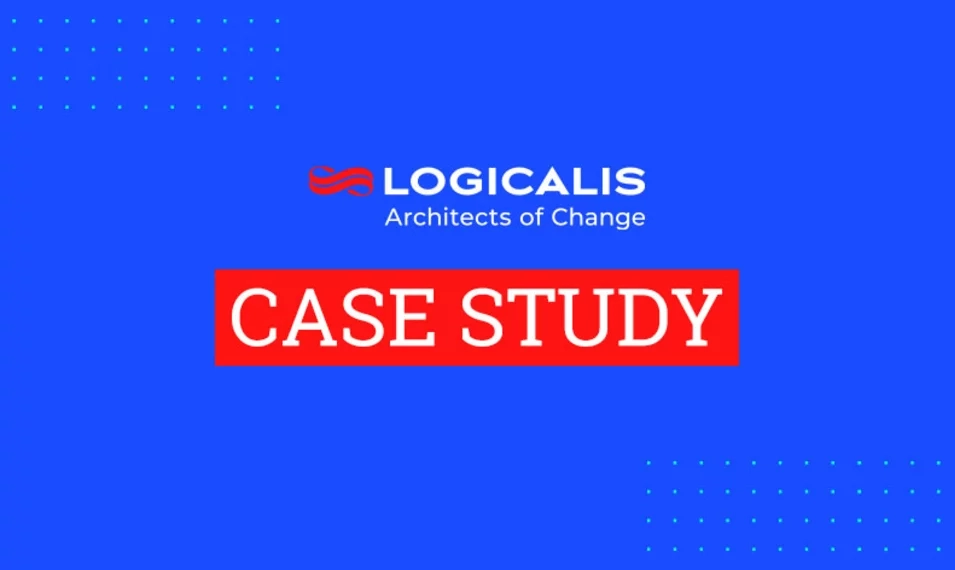, Jan 10, 2014
Logicalis U.S. revamped Enterprise Cloud data centers to utilize FlexPod validated architecture, providing flexibility, predictability and cost savings.
The Challenge
Logicalis is an international provider of integrated information and communications technology solutions and services. The company’s U.S. division serves over 3,000 customers in a range of industries, most with annual revenues over $250 million.
Logicalis has earned the Cisco Master Cloud Builder Specialization, Cisco Data Center Unified Computing Advanced Technology Program specialization, Cisco Powered Computing designation, and membership in the Cisco Managed Services Masters Program as well as the NetApp TSP (cloud) Program. The company is also a Cisco Gold Certified Partner, NetApp Platinum Partner and VMware Premier Partner.
Logicalis has been offering hosted services in its Cincinnati, Ohio, and Phoenix, Arizona, Logicalis Enterprise Cloud (LEC) data centers since 2000. Popular customer needs include application testing and development and disaster recovery.
Recently, in both LEC data centers, Logicalis’ experts found themselves with equipment from a variety of sources, employing many different OEM brands. This approach worked well for some time, but as customer needs expanded, Logicalis realized it would need a more predictable and standardized model to help guarantee planning and provide a trustworthy metric for growth and performance.
The Solution
After extensive research, the Logicalis data center team decided to implement the FlexPod™ architecture in their facilities. FlexPod is a pre-designed, pre-validated infrastructure building block that incorporates the Cisco Unified Computing System (UCS), Cisco Nexus Series Switches, NetApp FAS storage and VMware. Using FlexPod, Logicalis can easily refer to the capabilities of the FlexPod reference architecture to determine how their data center is performing and growing—all while providing enhanced scalability, management and growth capabilities. FlexPod also gives Logicalis the capability to offer more virtual desktop and database services to customers.
Each LEC customer is given a virtual compute container that includes processing, memory, storage and bandwidth. Customers with changing business needs can use a web-based service catalog to increase or decrease the size of the container, and Logicalis U.S. revamped Enterprise Cloud data centers to utilize FlexPod validated architecture, providing flexibility, predictability and cost savings Logicalis can fulfill the request using third-party automation and orchestration tools—all of which is enabled by FlexPod’s easy integration with third-party offerings.
“If a customer experiences a temporary spike in demand for compute resources, the Cisco UCS component automatically meets that demand,” says Mike Martin, Senior Vice President, Solutions and Services, for Logicalis. “Customers pay for these temporary bursts by the gigahertz, and only for the time they need the resources.” The Cisco Nexus 1000V Series Switch component enables accurate chargeback by keeping track of virtual machines as they move between servers. The NetApp unified architecture component of FlexPod allows for the inclusion and integration of Logicalis’ pre-existing infrastructure components, while NetApp storage efficiency technologies allow for de-duplication, thin provisioning, rapid cloning and flash caching across all workloads. Both of these features combine to make FlexPod a cost-effective solution.
After meeting with a new customer to assess its business and technology requirements, Logicalis might recommend a private cloud on the customer’s premises, or a hybrid approach combining a private cloud with the LEC. Logicalis builds and operates private clouds with the same FlexPod components used in the Logicalis data center. Some customers have their own FlexPod and use the LEC as their business continuity and disaster recovery solution.
Logicalis also utilizes the Cisco UCS C200 M2 server in its data centers in order to demonstrate Cisco Unified Communications and collaboration capabilities to customers. When Logicalis begins offering a Cisco Unified Communications managed service, customers will be able to choose whether to host the applications on-premise or in the Logicalis data center. FlexPod’s secure multitenancy means that any managed Cisco Unified Communications service will be provided with the utmost security, just as Logicalis managed services currently offer.
Increased Flexibility and Visibility
Utilizing the FlexPod architecture creates many financial and operational benefits for Logicalis. Logicalis has already experienced a 45 percent storage savings with the use of NetApp de-duplication technology. With clearly outlined performance expectations and pricing benefits, managers can easily see and leverage efficiencies. The IT team is also able to perform data backups in a shorter time frame and carry out disaster recovery directly from client databases, as well as reap the benefits of more points of protection and increased flexibility.
Lower Overhead Costs
Meanwhile, other FlexPod features allow for reduced administrative costs: Using the centralized management features of FlexPod, Logicalis IT managers can see the entire environment holistically, without being required to log on to other servers—and, similarly, configurations and changes can be spread automatically across all infrastructures instead of being manually entered over and over. Configuration profiles also help to alleviate the administrative burden.
Enhanced Service for Customers
The most potent benefits, though, come to Logicalis’ LEC customers. FlexPod allows for faster provisioning time, faster turnaround time for new clients, more advanced disaster recovery and data protection options, and a consistency of equipment and technology that makes processes smoother and more efficient— with almost no reconfiguration. It also allows for data to seamlessly move between the two LEC data centers while also providing advanced business continuity features such as SnapMirror, SnapProtect, SnapVault and SnapLock. And because of the low internal costs generated by FlexPod, customers are able to purchase industry-leading services from Logicalis at an affordable price.
Technical Implementation
In the Logicalis data center, all servers connect to the data network and storage through a single pair of Cisco UCS 6120XP 20-port fabric interconnects, making it unnecessary to individually cable new servers as the platform grows. These fabric interconnects, in turn, connect to Cisco Nexus 7000 Series Switches at the core, and to storage and encryption devices by way of a Cisco MDS 9513 multilayer director switch. Logicalis configured the Cisco Nexus 7000 Series Switch with two virtual device contexts (VDCs), making the cloud environment and the traditional managed services environment function as if they were separate logical switches.
The VDCs are connected to NetApp Clustered-Ontap V-Series clusters, which provide encrypted and non-encrypted storage. The NetApp SANs have flash cache and flash pool capabilities to handle the ever-changing workloads of a service provider while maximizing disk capacity utilization. This creates a foundation for VMware vSphere as the hypervisor and virtualization management and control system. With the integration between VMware and NetApp, Logicalis is able to leverage replication and protection technology that provides a competitive edge in available service offerings for customers.
Four pairs of Cisco Application Control Engines (ACE) provide SSL encryption and load balancing for requests flowing into the Logicalis Private Cloud. Each customer is assigned a private virtual context on the Cisco ACE appliance. Utilizing Vormetric and NetApp-encrypted SAN, Logicalis can scale from individual file/ directory encryption to the entire system/container encryption unique to each customer, which allows them to adhere to a range of standards and regulations.


